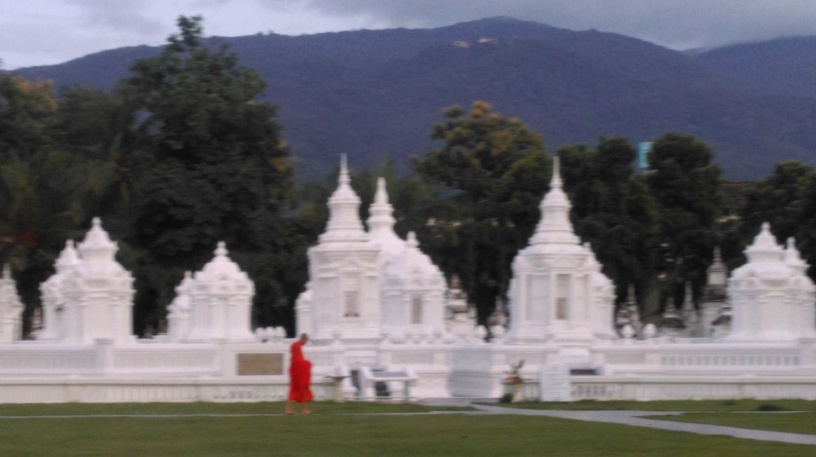here’s a question for those of you who work on the anthropology of space and time: how much work has been done on the temporality of religious practice?
maybe it’s because we are here in taiwan in the midst of the 7th lunar month, when the ghosts get their annual monthlong furlough from the earth prisons, or it could be my recent visit to chiang mai; but i’ve been thinking about the way that religious practices structure time, not just in the meta sense of cosmogony and teleology, but at the daily scale. when in chiang mai, my habits as an early riser placed me on the street buying breakfast just as the monks left their temples. theravada buddhist monks in thailand are mendicants, and all of their food for the day must be gathered through either early morning begging or noontime visits to temples. consequently, groups of monks leave the temples just after dawn and continue begging until around 7:30 or 8 am. neighborhood businesses and homes often send representatives out onto the street with food for the monks to place in monk’s bowls. this practice, which organizes the time of a neighborhood around the movement of the monks, is considerably different from mahayana buddhist practice on taiwan, in which monastic communities generally remove themselves from daily interactions with a surrounding neighborhood. indeed, the ideal locations for mahayanists are usually remote mountains in which one may retire from worldly involvement. instances of neighborhood worship on public streets in taiwan is concentrated on days around the new and full moons, as well as days of observing the birthdays of local deities. and, of course, the 7th lunar month
it would be interesting to see what people think about the temporalities of religious practice. there are likely some useful comparative projects here–i’m thinking about controversies about angelus bells in european cities, not to mention one of steven feld’s installations about morning calls to prayer and amplified pentecostal preaching in accra

